Abstract
Activities of the microsomal mono-oxygenases 7-ethoxycoumarin O-de-ethylase (EOC) and aldrin epoxidase (AE), together with microsomal epoxide hydrolase (EH) activity and concentrations of reduced glutathione (GSH) have been measured in liver from patients with alcoholic cirrhosis and in normals. Activities of both mono-oxygenases were significantly reduced in alcoholic cirrhosis. EOC activity (pmol 7-OH coumarin formed/mg microsomal protein/min) was 108.0 +/- 10.6 (n = 8) in normals and 60.9 +/- 11.6 (n = 8) in alcoholic cirrhosis (P less than 0.01). AE activity (pmol dieldrin formed/mg microsomal protein/min) was 58.9 +/- 9.5 (n = 11) in normal liver biopsies and 29.9 +/- 8.6 (n = 9) in alcoholic cirrhosis (P less than 0.05). Microsomal EH activity (nmol styrene glycol formed/mg microsomal protein/min) was similar in normals (39.2 +/- 4.4, n = 11) and alcoholic cirrhosis (40.5 +/- 9.1, n = 6). GSH concentrations (microgram GSH/g liver tissue) were lower (P less than 0.01) in alcoholic cirrhosis (792 +/- 73, n = 10) compared to normals (1182 +/- 76, n = 6).
Full text
PDF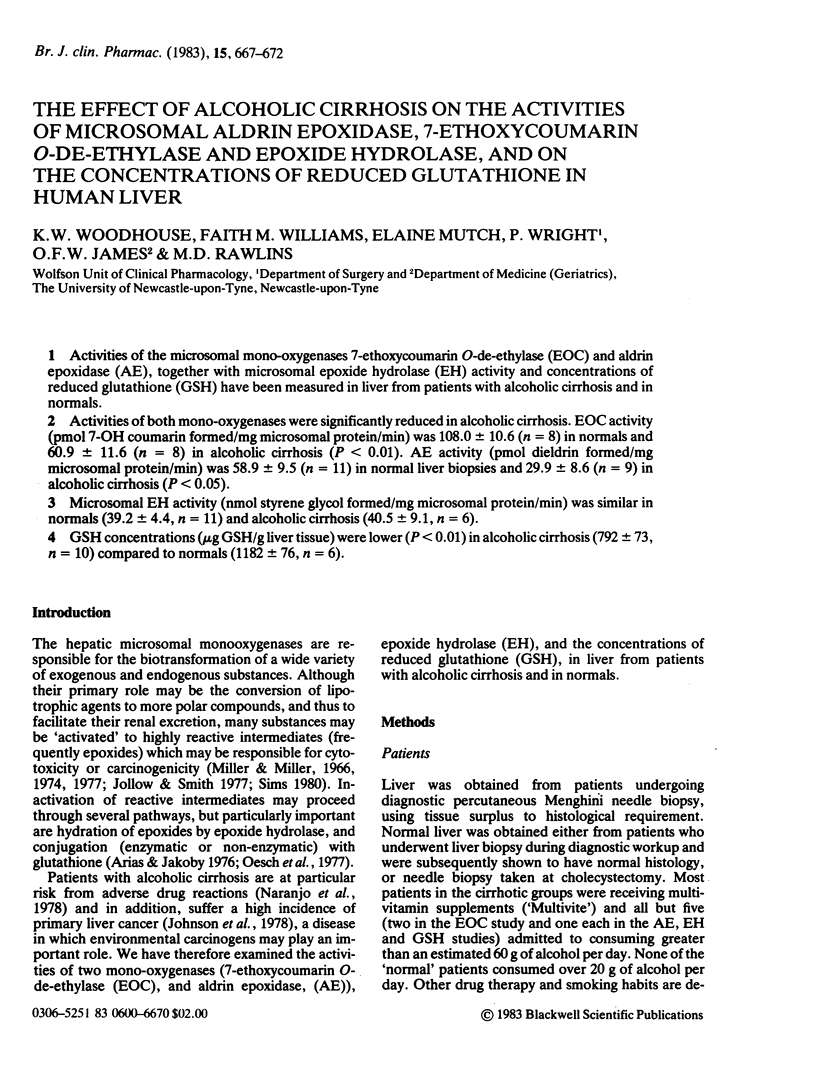
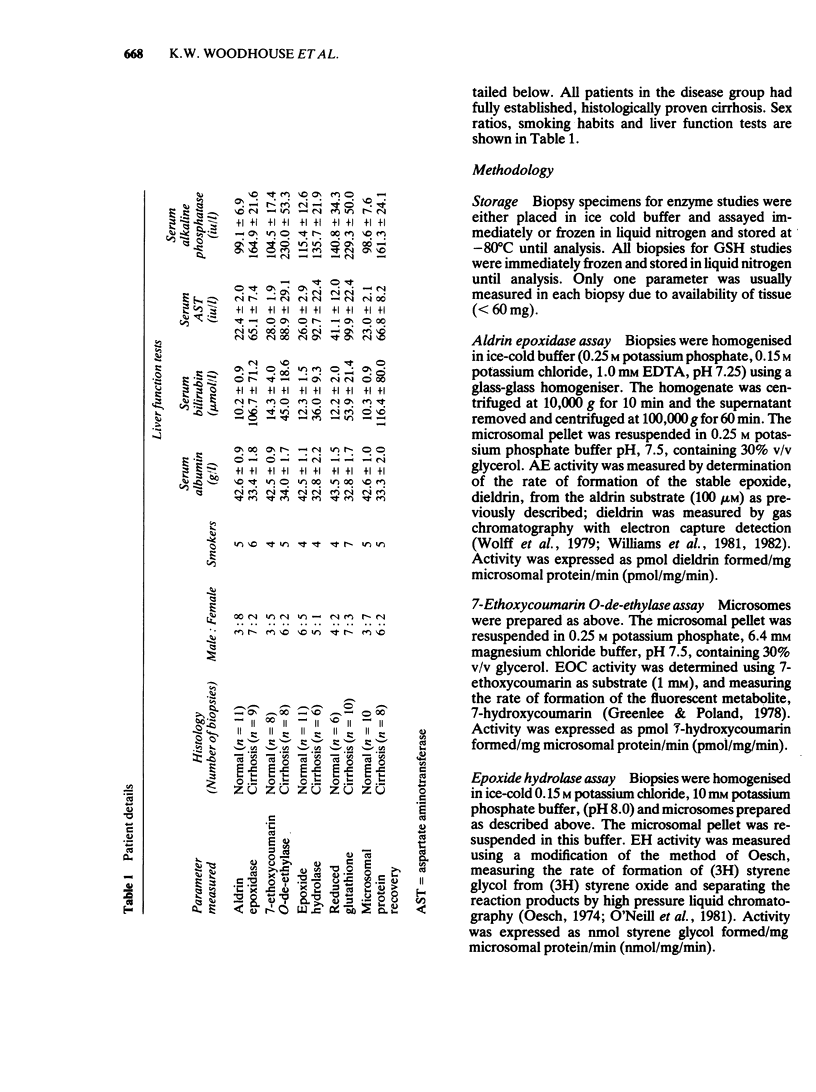
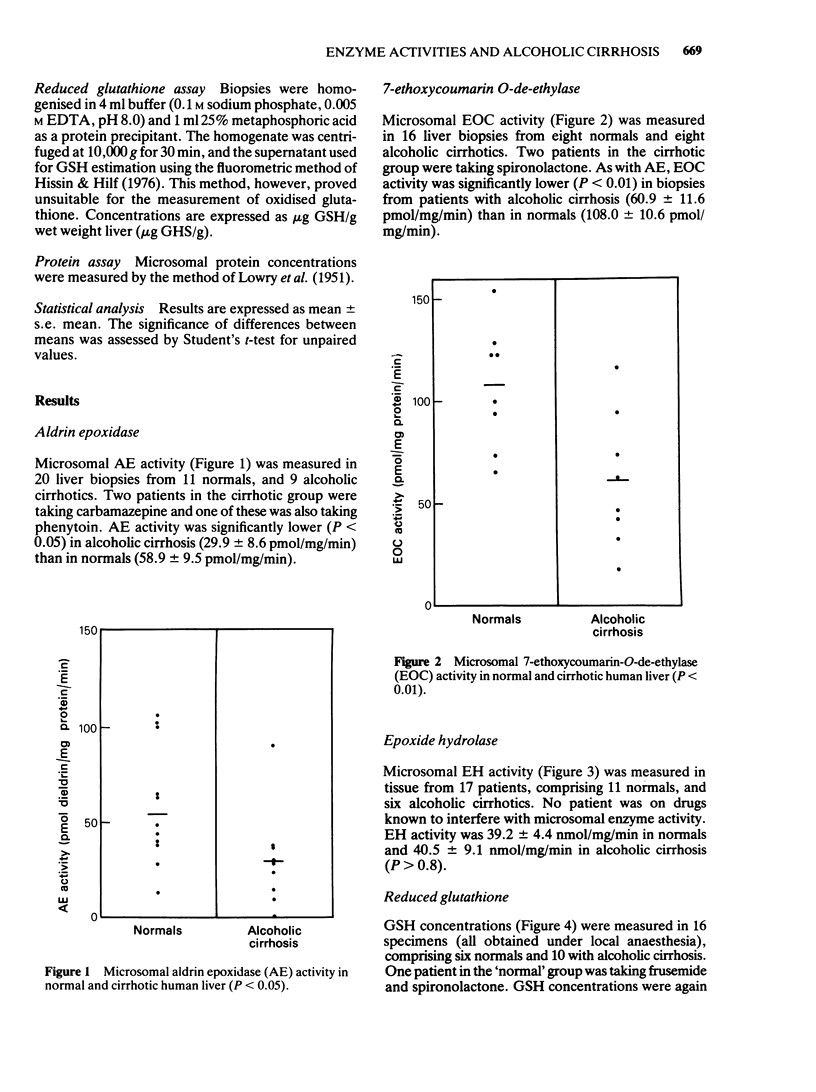
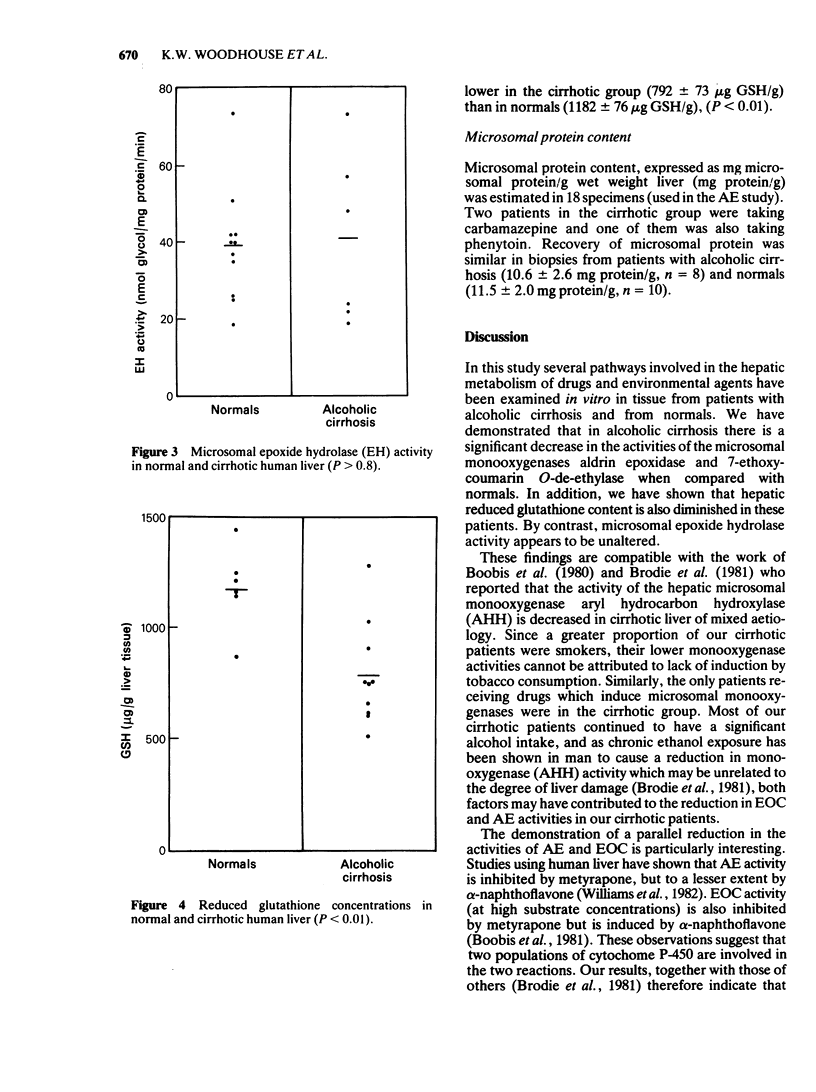
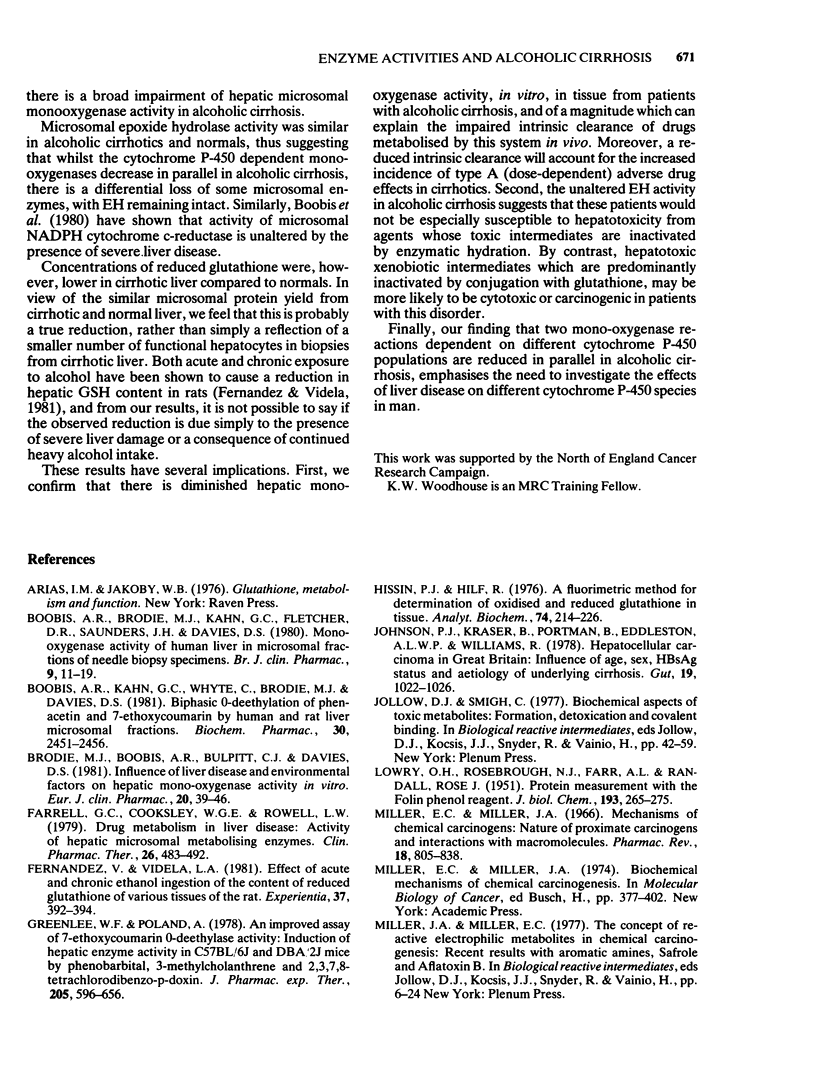
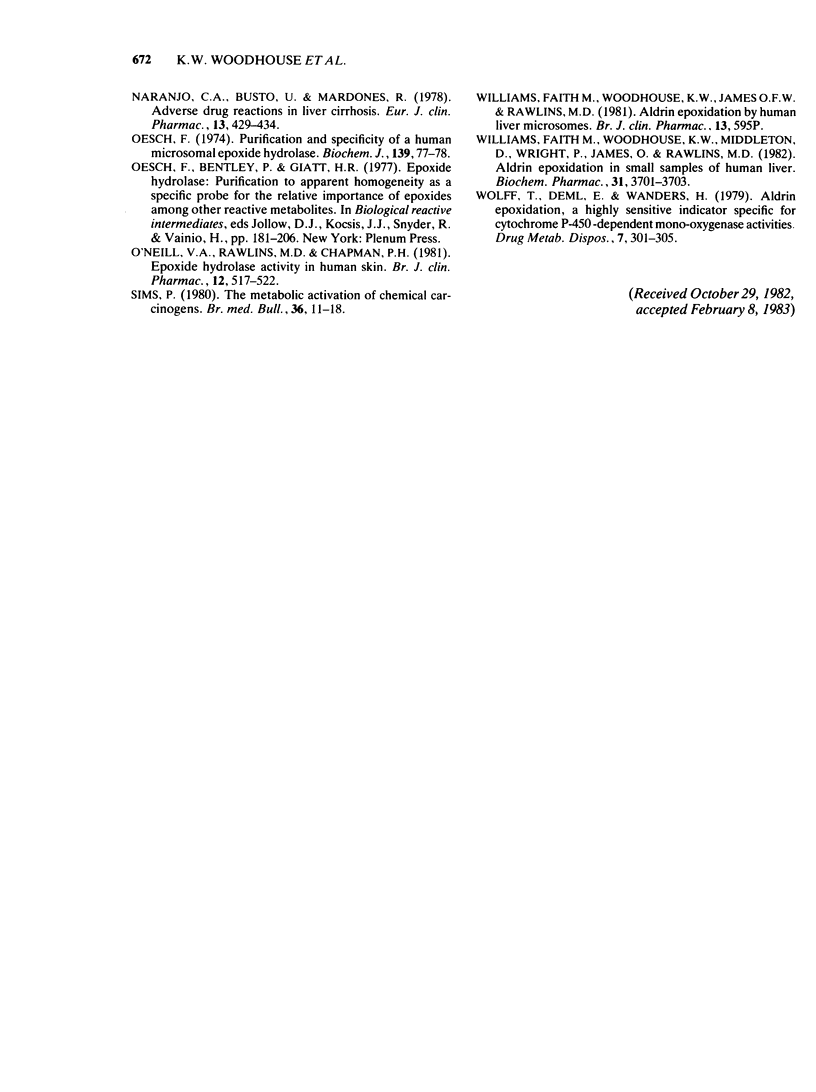
Selected References
These references are in PubMed. This may not be the complete list of references from this article.
- Boobis A. R., Brodie M. J., Kahn G. C., Fletcher D. R., Saunders J. H., Davies D. S. Monooxygenase activity of human liver in microsomal fractions of needle biopsy specimens. Br J Clin Pharmacol. 1980 Jan;9(1):11–19. doi: 10.1111/j.1365-2125.1980.tb04790.x. [DOI] [PMC free article] [PubMed] [Google Scholar]
- Brodie M. J., Boobis A. R., Bulpitt C. J., Davies D. S. Influence of liver disease and environmental factors on hepatic monooxygenase activity in vitro. Eur J Clin Pharmacol. 1981;20(1):39–46. doi: 10.1007/BF00554665. [DOI] [PubMed] [Google Scholar]
- Farrell G. C., Cooksley W. G., Powell L. W. Drug metabolism in liver disease: activity of hepatic microsomal metabolizing enzymes. Clin Pharmacol Ther. 1979 Oct;26(4):483–492. doi: 10.1002/cpt1979264483. [DOI] [PubMed] [Google Scholar]
- Fernández V., Videla L. A. Effect of acute and chronic ethanol ingestion on the content of reduced glutathione of various tissues of the rat. Experientia. 1981 Apr 15;37(4):392–394. doi: 10.1007/BF01959881. [DOI] [PubMed] [Google Scholar]
- Greenlee W. F., Poland A. An improved assay of 7-ethoxycoumarin O-deethylase activity: induction of hepatic enzyme activity in C57BL/6J and DBA/2J mice by phenobarbital, 3-methylcholanthrene and 2,3,7,8-tetrachlorodibenzo-p-dioxin. J Pharmacol Exp Ther. 1978 Jun;205(3):596–605. [PubMed] [Google Scholar]
- Hissin P. J., Hilf R. A fluorometric method for determination of oxidized and reduced glutathione in tissues. Anal Biochem. 1976 Jul;74(1):214–226. doi: 10.1016/0003-2697(76)90326-2. [DOI] [PubMed] [Google Scholar]
- Johnson P. J., Krasner N., Portmann B., Eddleston A. L., Williams R. Hepatocellular carcinoma in Great Britain: influence of age, sex, HBsAg status, and aetiology of underlying cirrhosis. Gut. 1978 Nov;19(11):1022–1026. doi: 10.1136/gut.19.11.1022. [DOI] [PMC free article] [PubMed] [Google Scholar]
- LOWRY O. H., ROSEBROUGH N. J., FARR A. L., RANDALL R. J. Protein measurement with the Folin phenol reagent. J Biol Chem. 1951 Nov;193(1):265–275. [PubMed] [Google Scholar]
- Miller E. C., Miller J. A. Mechanisms of chemical carcinogenesis: nature of proximate carcinogens and interactions with macromolecules. Pharmacol Rev. 1966 Mar;18(1):805–838. [PubMed] [Google Scholar]
- O'Neill V. A., Rawlins M. D., Chapman P. H. Epoxide hydrolase activity in human skin. Br J Clin Pharmacol. 1981 Oct;12(4):517–521. doi: 10.1111/j.1365-2125.1981.tb01260.x. [DOI] [PMC free article] [PubMed] [Google Scholar]
- Oesch F. Purification and specificity of a human microsomal epoxide hydratase. Biochem J. 1974 Apr;139(1):77–88. doi: 10.1042/bj1390077. [DOI] [PMC free article] [PubMed] [Google Scholar]
- Sims P. The metabolic activation of chemical carcinogens. Br Med Bull. 1980 Jan;36(1):11–18. doi: 10.1093/oxfordjournals.bmb.a071607. [DOI] [PubMed] [Google Scholar]
- Williams F. M., Woodhouse K. W., Middleton D., Wright P., James O., Rawlins M. D. Aldrin epoxidation kinetics in small samples of human liver. Biochem Pharmacol. 1982 Nov 15;31(22):3701–3703. doi: 10.1016/0006-2952(82)90603-7. [DOI] [PubMed] [Google Scholar]
- Wolff T., Deml E., Wanders H. Aldrin epoxidation, a highly sensitive indicator specific for cytochrome P-450-dependent mono-oxygenase activities. Drug Metab Dispos. 1979 Sep-Oct;7(5):301–305. [PubMed] [Google Scholar]


